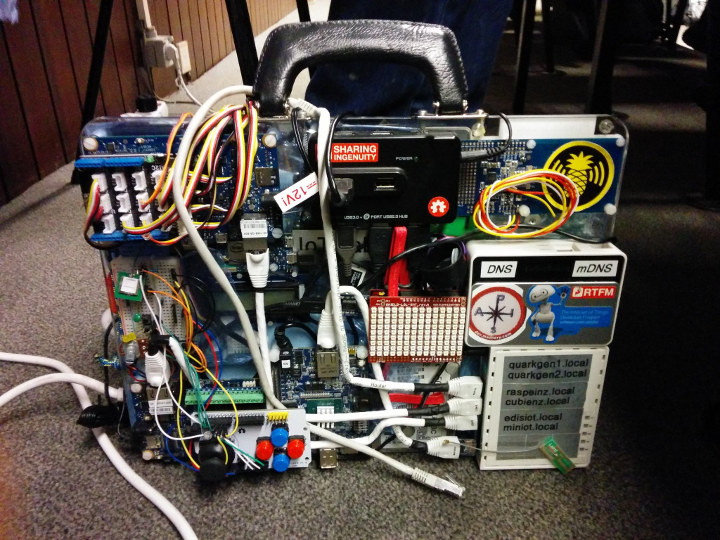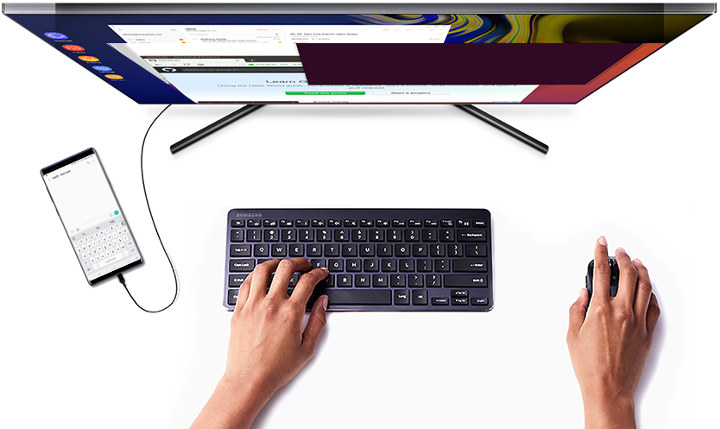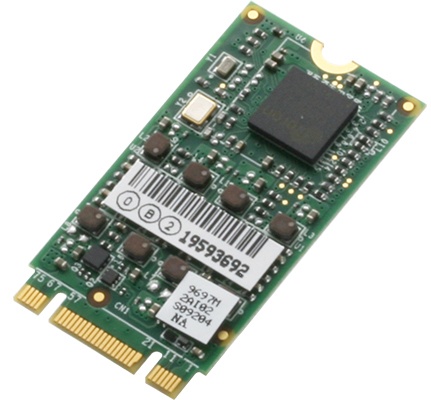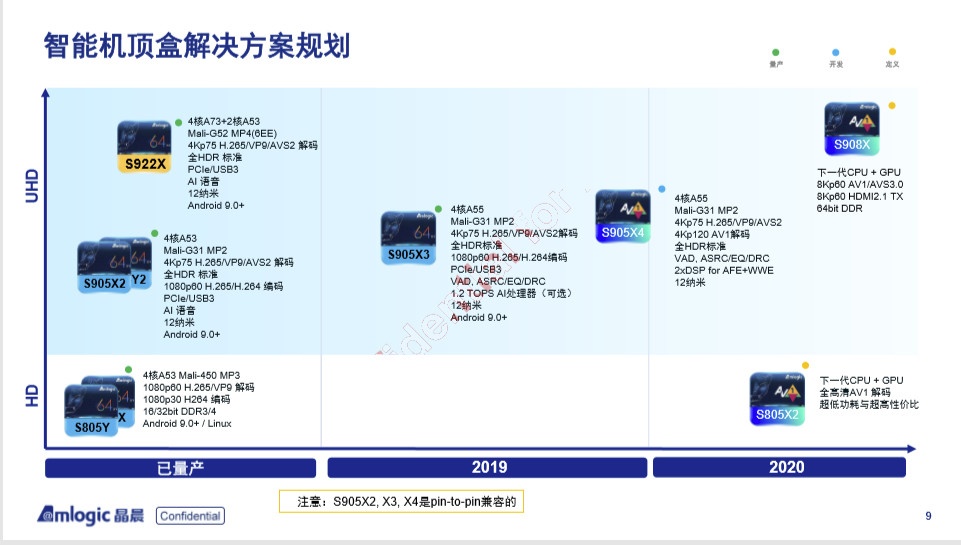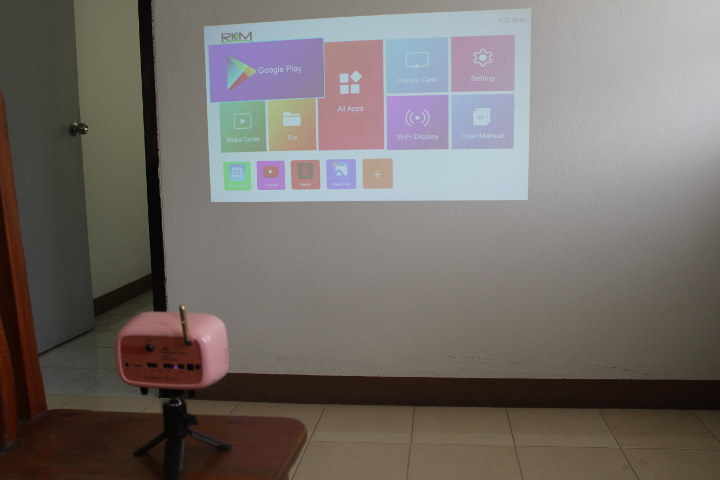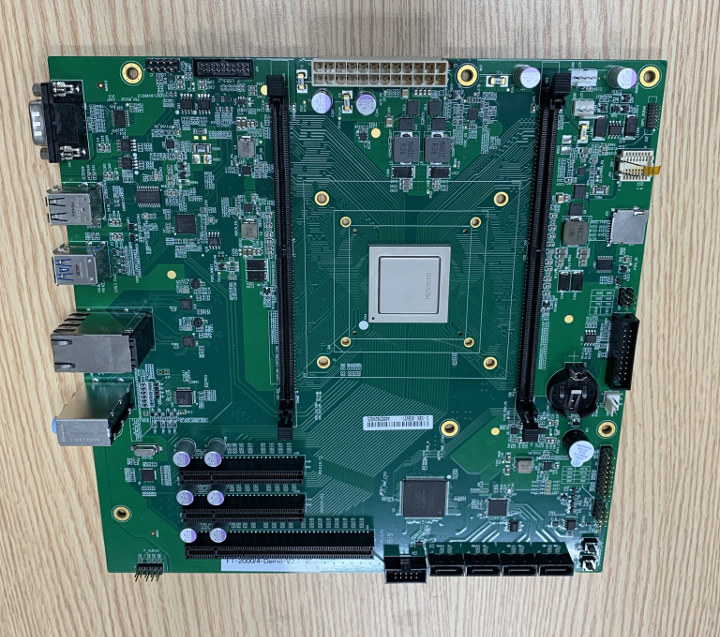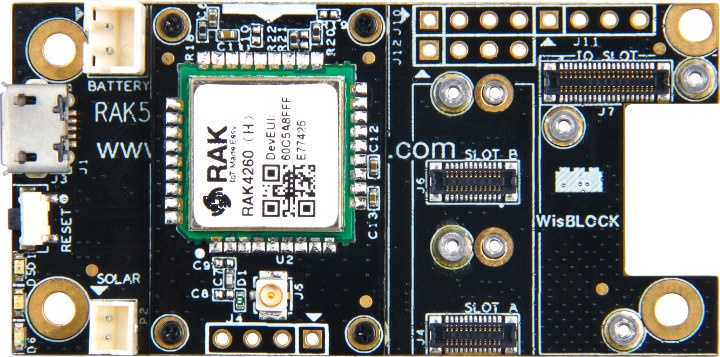FOSDEM (Free & Open-source Software Developers’ European Meeting) takes place every year in Brussels, Belgium on the first weekend of February. FOSDEM 2020 is scheduled for February 1-2, and now that developer rooms have already been announced, there are calls for proposals for each topic. Benjamin Henrion (aka Zoobab), a frequent reader and commenter of CNX Software, will be in charge of the IoT devroom and has now initiated a call for proposals for Internet of Things talks. The devroom will take place on Saturday or Sunday between around 10.30 and 18:00. Each talk will last 25 minutes with a 5-minute break between talks. The talks must be about fully open source projects that cover one of the topics below: Machine-to-machine (M2M) communication on small embedded devices Distributed applications in any field of interest for autonomous/self-controlled devices, (e.g. domotics, automotive, etc) Networking: TCP/IP, mesh networking, message queuing, cross-layer solutions Real-life […]
Linux on DeX Won’t Be Available on Android 10 as Samsung Scraps the Initiative
Desktop mobile convergence was talked a lot a few years with the hope that smartphones would eventually be used as a phone while on the go, and an efficient desktop or laptop replacement at the office or the home. Canonical was heavily involved in making convergence happen with Ubuntu Touch, but over two years ago they eventually had to drop all development efforts focusing on IoT and the Cloud instead. Samsung came up with its own Linux on Galaxy offering in 2017, which officially launched as Linux on Dex beta nearly a year ago, and allowed users, mostly developers, to run a Linux Desktop while their Samsung Android smartphone was connected to a monitor. Linux on Dex is Dead This looked promising, but Android Police reports some beta users received an email from Samsung explaining that the beta program had ended and that Linux on DeX will not be supported […]
AAEON M.2 and mPCIe Cards for AIoT Acceleration Run Kneron KL520 AI SoC
The AAEON announcement of its AI Acceleration M.2 and mini-PCIe cards AAEON uses Kneron KL520 AI SoC dual Cortex-M4 on a series of new modules that are accelerating AI edge computing and that only need 0.5 Watt of power. The modules are M.2 and mini-PCIe AI acceleration cards, that offer a new way to come at AI acceleration. What AI Features are Enhanced The cards are meant to enhance and accelerate AI functions, like gesture detection, facial and object recognition, driver behavior in such AIoT areas as access control, automation, and security. History of the AAEON Development Previously AAEON has been offering the M.2 and mini-PCIe AI core modules for the Boxer computers that are based on the Intel Movidius Myriad 2 and Myriad X Vision Processing Units (VPU). Reporting was done on these previous releases in the articles on the UP AI core mini-PCIe card and the AI Core […]
Amlogic S805X2, S905X4, and S908X AV1 Full HD/4K/8K Media Processors to Launch in 2020
AOMedia AV1 open, royalty-free video codec has come a long way since it was first introduced in 2016, and we’ve recently seen AV1 hardware video decoding integrated into higher-end STB SoCs such as Broadcom BCM7218X or Realtek RTD1311/RTD1319 processors. But AV1 codec is also coming to lower-cost media processors as shown by Amlogic 2020 roadmap below. We should expect at least three new AV1 capable processors in 2020. Amlogic S905X4 Specifications: CPU – Quad-core Arm Cortex-A55 processor GPU Arm Mali-G31MP2 Video 4Kp75 H.265, VP9, AVS2 4Kp120 AV1 HDR support Smart Audio Voice Activity Detector (VAD) Asynchronous Sample Rate conversion (ASRC) Equalizer (EQ) Dynamic Range Compression (DRC) 2x DSP for audio front end (AFE) and wake word engine (WWE) Amlogic S905X4 looks like an update to Amlogic S905X3 with AV1 codec support, and maybe extra audio features. Amlogic S908X We’ve previously seen Rockchip RK3588 with Cortex-A76 / A55 cores, 8K video […]
Some Tesla EV’s Control Screens Went Dark as Excessive Logging killed the eMMC Flash
Despite wear-leveling techniques, eMMC flash memories tend to wear out over time as they have limited write cycles. So we’ve seen in the past the importance of wear estimation in eMMC flash chips, and methods to limit write operation such as disabling logging when possible or write the log to RAM with log2ram in order to extend the life of flash-based storage devices. My Xiaomi A1 smartphone basically became unusable after a little over a year due to eMMC flash issues, but that was not that big of an issue since I could just get another phone and the most important data is saved in the cloud nowadays. That’s one thing when it happens to a phone, and another when it happens to your car, as some Tesla S & X owners realized when they lost access to the control screen in the car because the eMMC flash was worn […]
Rikomagic R6 Review – Part 1: Android Mini Projector’s Unboxing and First Boot
Rikomagic R6 is a mini Android projector that looks like a vintage radio, or depending on your point of view a mini vintage television. We’ve already gone through the specifications last time around, but the smart projector is based on a quad-core Rockchip processor coupled with up to 2GB RAM and 16GB storage, while the 720p projector delivers up to 70 ANSI lumens. The company has now sent me a sample for review, so in this first part of the review, I’ll show what’s in the package, and what it looks like after boot, before going through more thorough testing in the second part of the review. Rikomagic R6 Unboxing The package reads “R6 MINI Projector” and “Smart Home Theater”. I received a pink model, but the company also offer other colors. The projector’s lens is protected by a black cover. The projector feels quite heavy and indeed it weights […]
This Micro-ATX Motherboard is Based on Phytium FT2000/4 Arm Desktop Processor @ 3.0 GHz
There have been attempts to bring Arm processors to desktop PC’s in recent years with projects such as 96Boards Synquacer based on SocioNext SC2A11 24-core Cortex-A53 server processor or Clearfog-ITX workstation equipped with the more powerful NXP LX2160A 16-core Arm Cortex A72 networkingprocessor @ 2.2 GHz. Those solutions were also based server and networking SoCs, but there may soon be another option specifically designed for Arm Desktop PCs as a photo of an Arm Micro-ATX motherboard just showed up on Twitter. Here are the specifications we derive from the Tweet and the photo: SoC – Phytium FT2000/4 quad core custom Armv8 (FTC663) desktop processor @ 2.6 – 3.0 GHz with 4MB L2 Cache (2MB per two cores) and 4MB L3 Cache; 16nm process; 10W power consumption; 1144-pin FCBGA package (35×35 mm) System Memory – 2x SO-DIMM slot supporting 72-bit (ECC) DDR4-3200 memory Storage – 4x SATA 3.0 connectors; MicroSD card […]
RAKWireless RAK4260 is a Tiny LoRAWAN Module based on Microchip SAMR34 LoRa SiP
Rakwireless has just announced a new module part of their LPWAN family: RAK4260 LoRaWAN module based on Microchip ATSAMR34J18B LoRa SiP and at just 15x15x1.2 mm, one of the smallest LoRaWAN modules in the market. The new module is cheaper than the company’s earlier RAK811 module and consumes less power at just 790 nA in sleep mode. The company also provides a RAK4260 evaluation board with easy access to GPIOs and serial interfaces. RAK4260 LoRaWAN Module Specifications: SiP – Microchip ATSAMR34J18 SiP with SAM L21 Arm Cortex M0+ MCU @ 48 MHz, up to 40 KB RAM, up to 256 KB Flash LoRa Connectivity Frequency Range – 862 to 1020 MHz High level of accuracy and stability (32MHz TXCO) Max Tx Power: 20dBm; Max Sensitivity: -148dBm; Rx Current: 17mA (typical) Compliant with LoRaWan 1.0.2 Expansion – Castellated holes with I2C, SPI, ADC, UART, GPIOs Power Consumption Low RX current of […]


